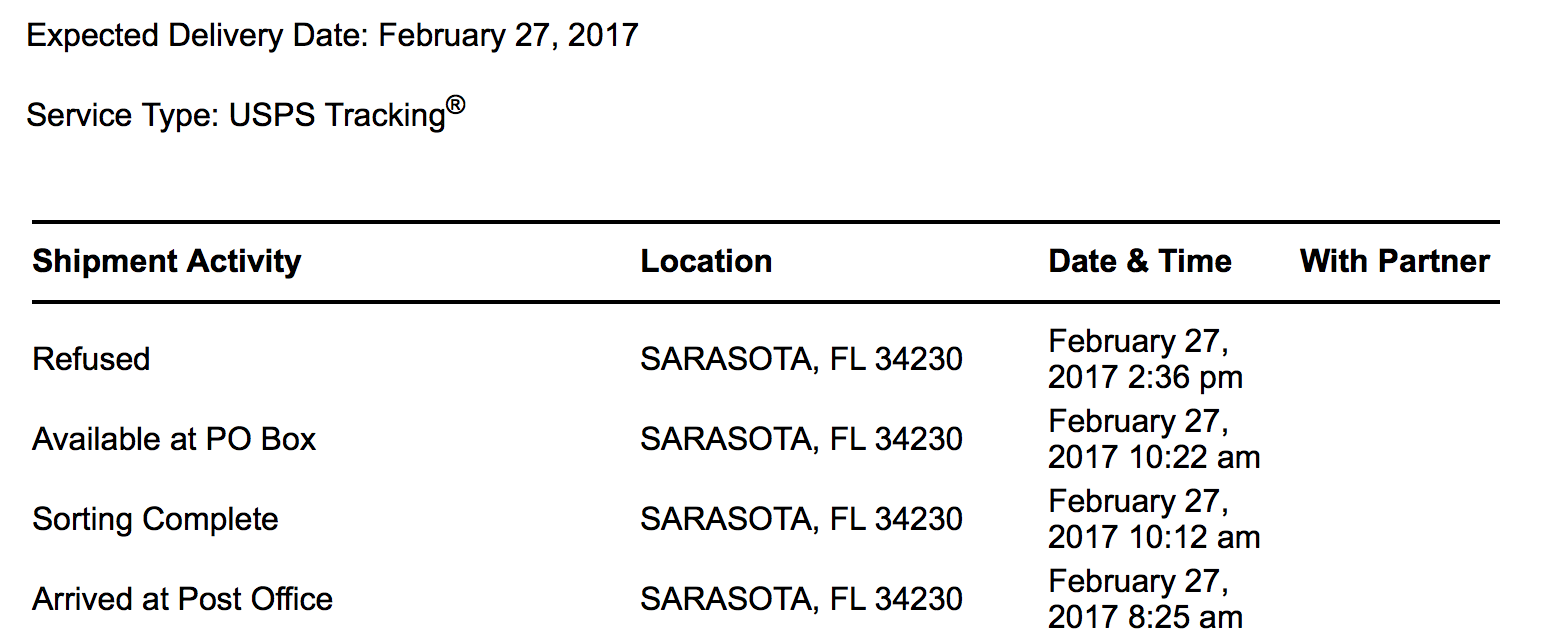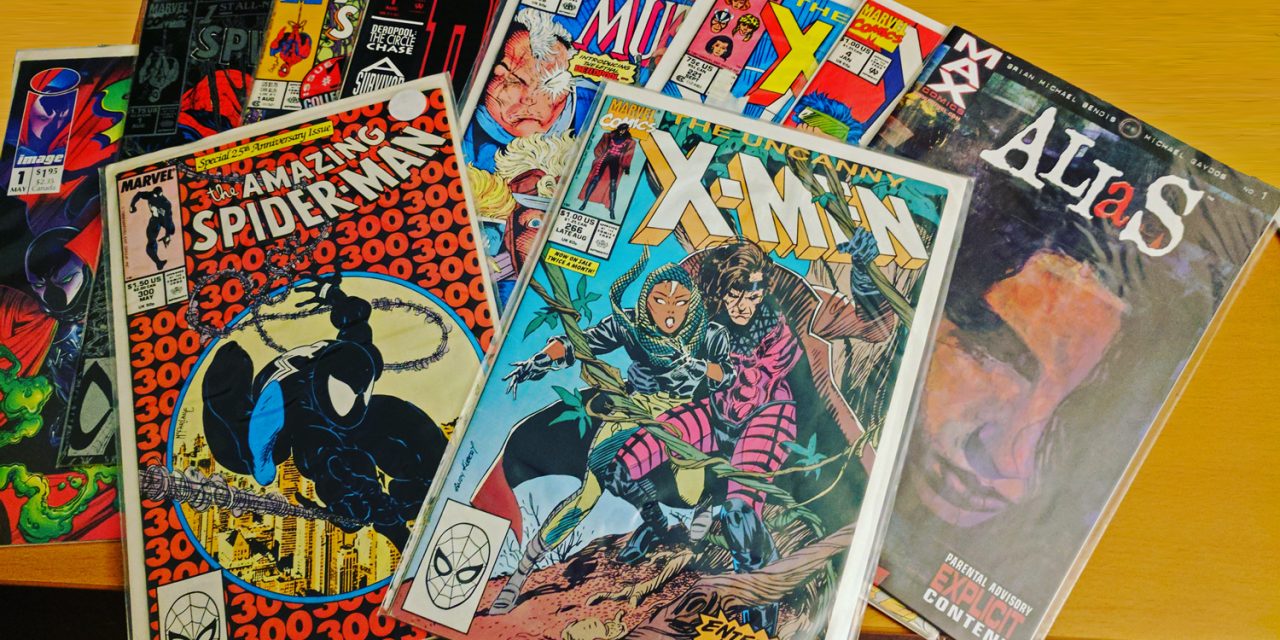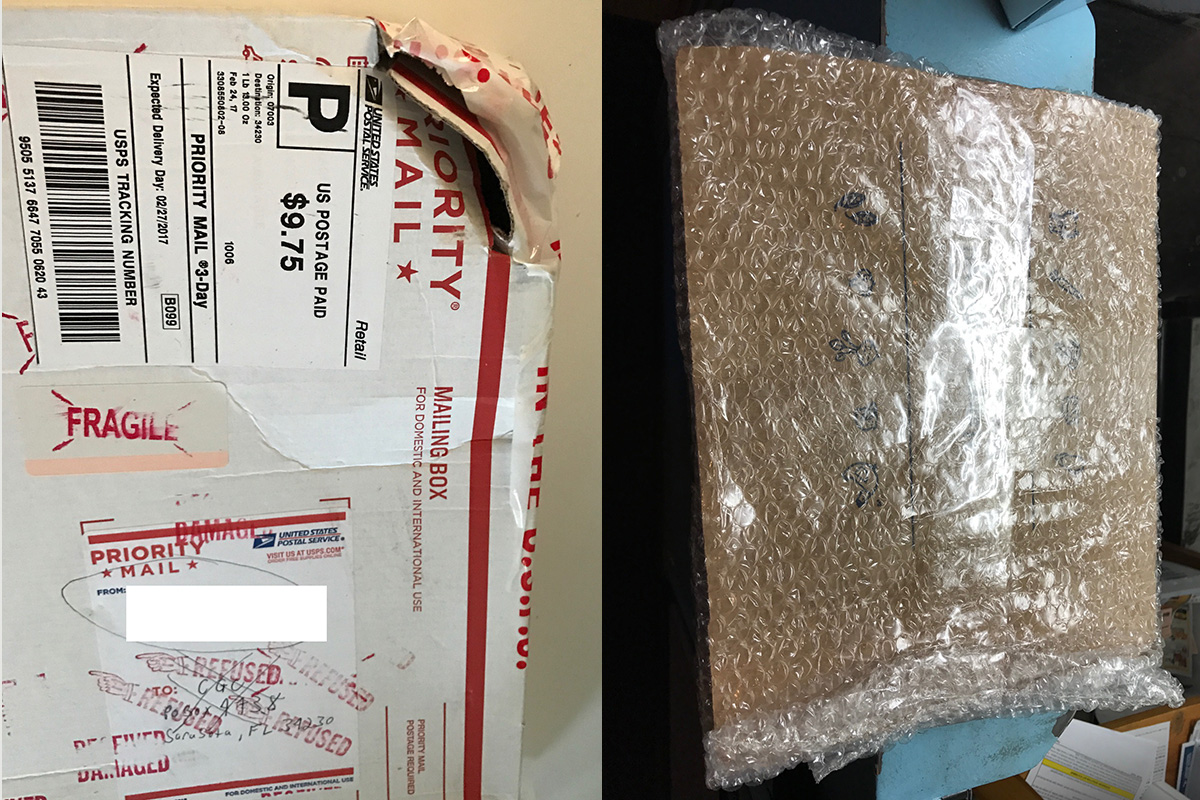TL;DR: This is a primer for anyone that collected comics in the late ’80s/early ’90s and amassed a large amount of comics that they don’t know what to do with. I explain why I started collecting and stopped collecting comics, why I finally pulled my collection out of my parents attic and the process I went through to get key issues graded by CGC. This article will be updated as I go through the comic book grading process.
George and comic books: an abridged history
I’ve been collecting comic books, in one form or another, ever since I was 10 years old. My first comic book was actually a pack of Marvel comics that my mother bought for me from the long-gone Newberry’s department store to keep me occupied during an eight-hour flight to Greece. I picked this particular pack because G.I.Joe #55 was the only visible issue and I was blown away by the fact that Cobra Commander and Destro were unmasking on the cover. I was a huge G.I. Joe fan, but my only storyline exposure to the franchise was the cartoon, which was never as ballsy as the comic book. The two other books included Groo The Wanderer #23, which I thought was hilarious but never grew to love and Uncanny X-Men #213.
That was the book that changed my life. I don’t know whether it was Alan Davis’ insane cover art featuring Wolverine and Sabertooth tearing each other apart that sucked me in or the fabulous finale to the Mutant Massacre featuring a badass British Psylocke, but I was sold. I spent a month in Greece desperately searching out other X-Men issues and failed miserably. When I got home, I begged my mother to take me to a comic store, but they weren’t that popular in 1987 and I had to settle for hunting down issues at local newsstands.
In and out of the attic
I collected comics religiously from 1987 until about 2006. I made sure every issue was bagged and backed and stored alphabetically in one of the dozen or so long boxes I had in my closet. As I got older, ran out of space and earned a little more money, I switched to collected trade paperbacks. And finally, I moved completely over to the Marvel Universe app and started reading all my books digitally. My comic collection sat untouched in my parents’ attic until a few weeks ago when, after being inspired by my recent trip to New York Comic Con, I decided to spend an evening lugging the heavy boxes down from the crawl space and move them to my home.
Sorting through the crap
I knew I had a few rare books like Amazing Spider-Man #300 and a bevy of rare mutant books, since I owned every issue of X-Men and their collective spin-offs for close to two decades. I’m also not a fool. I know that those early ’90s books were distributed in high numbers and that 99% of my collection wasn’t worth the paper it was printed on. I mean, did I really need to buy every version of Robin II #1 with the hologram cover? I won’t even talk about all the versions of Death of Superman I have.
I set off to try to figure out what to do with my collection. First, I went through every comic, box by box, picking out issues that actually meant something to me and put those in one pile. Then I went through the collection again looking for key books that I knew had appreciated somewhat in value (New Mutants #98, ASM #300, Uncanny X-Men #266, etc.). Then I did what any Gen X comic fan would do. I ordered a copy of the Overstreet Price Guide and started combing through it, red flagging any books that sounded familiar and that were worth more than $50 (or had the potential to increase in value). That’s when I discovered that I had books that I must have bought and never read, like Alias #1 and NYX #3. I bundled up all three piles and put them in a safe place until I could figure out what to do with them.
Comic book grading options
Here’s the deal, I have no interest in making money off my comic collection. I’m one of those people that says they are going to collect something and eventually sell it off and then I immediately feel guilty when I do (or never get around to it). I’m not hard up for cash and I’m not a hoarder — I really just want to preserve the comics I love in hopes that I can share them with any offspring I birth. I know that the state they are in now will only worsen with time and the only option I have is to get them graded and preserved.
After digging into the different comic grading companies and services available, here are the viable options I considered:
- Certified Guaranty Company (CGC): The gold standard of comic book grading. These guys formed around the time I got out of comic collecting and have been going strong ever since. They offer a number of pricing options and their graded books typically command the highest price on the secondary market.
- Comic Book Certification Service (CBCS): Formed by ex-CGC veterans. Their prices are comparable to CGC and their services receive universal praise from comic books shops.
- Professional Grading eXperts (PGX): PGX was the second most popular grading company for years, due largely to their pricing being significantly cheaper than CGC’s. However, the company has received some negative publicity recently due to improper grading and their graded books have plummeted in price on the secondary market.
I decided to go with CGC since I could afford their services and liked the fact that they have been in business longer than anyone else. There are three subscription tiers available, ranging from $39 to $299 a year. I chose the middle option, which includes a $150 credit, 10% off services, grader notes and online access for $149. The pricing for submissions is where it gets confusing. You can choose from close to a dozen services depending on what you need. All my comics are from the modern era, so I went with the modern grading service for $18 a book. However, there’s a catch. The books have to be worth less than $200. If the books grade higher than $200, CGC can bump you to a higher grading service and bill you, which is fine by me. I doubt any of my books are worth more than $200.
Shipping comic books for grading
I shipped six books to CGC on Friday as a test run (NM #98, AMS #300, Uncanny #266, Alias #1, NYX #3 and Spawn #1). I made sure each book was in its own bag and back and stacked them all into one vinyl record bag that I sealed with scotch tape. I then taped the comic package onto a piece of cardboard that I took from the bottom of my latest Blue Apron order. Finally I taped another piece of cardboard on top and around both cardboard slabs. I placed everything into a bubble wrap sleeve and shipped everything in a medium USPS priority box. I initially tried shipping via FedEx, but CGC uses a PO Box that doesn’t accept FedEx packages. The good news is that my package reached Florida from Jersey by Monday and now I’m just waiting for an update from CGC.
Update 2/28/17 — Worst case scenario

So the worst possible scenario that could happen happened. After getting a notification that my comic book shipment had reached CGC’s PO Box, I got an email from USPS saying that my package had been refused — in huge yellow letters. I immediately called CGC and the lady that answered explained that they refuse any packages that is physically damaged.
“How damaged was my package,” I asked befuddled.
“I can’t say, it must have had some evidence that it was crushed, opened or had water damage,” she replied. “We sent it back so you can start the insurance process.”
I told her I was about to have a panic attack and thanked had her for explaining everything. Real talk: I only got about $100 worth of insurance, because I didn’t know what anything was worth. I also know that USPS is a pain to get insurance reimbursement from unless the package was destroyed. I quickly did the math. I sent the package on Friday directly from USPS. It got there on Monday after a stop in Tampa. How much damage could have happened in that time?
The comics were sealed in bags with backing boards and then double bagged again and bound to oversized cardboard. Then they were bubble wrapped before being placed in the priority shipping box. My hope is that while the box might have gotten damaged, that the comics are perfectly fine. Well, as long as no one stabbed it. I know there was some space between the bubble wrap and the box, but I left it alone because nothing was moving. Maybe the box was just crushed without any internal damage. The package is on its way back and should be here by Thursday.
Update 3/3/17 — Dodged a bullet
My package finally came back yesterday and it definitely had a giant chunk of a corner destroyed. USPS were nice enough to tape it back up, but I could still stick my finger in and feel the contents. The good news is that all that time I spent taping cardboard and bubble wrap to the books paid off and there was no damage to my comic books. The bad news is that I lost a week and USPS is the absolute worst to deal with when it comes to these types of situations.
I went to the Broad Street, Bloomfield post office and asked for my money back for shipping since it was heavily damaged and never left USPS’s hands. The manager explained to me that they could not be responsible for the package because it was not destroyed and it reached it’s destination. Worst yet, I had to ship it out via USPS again because CGC only offers a PO Box for submissions. I had no choice but to pack everything back up again, stand in line for an hour, pay $12 and hope for the best.
Update 3/6/17 — Package received
Well, after another four days of watching my comics travel through the USPS wormhole, they finally materialized in Saratoga, FL and CGC accepted the shipment. I just got a notification from CGC simply stating that they received my submissions and will be updating me via my account page.
This will probably be my last update until I get my comics back, which could take up to a month. So, go read something else on this site in the meantime or catch up on back episodes of Mai Tai T.V. Even better, peruse Drexbat21’s Instagram feed. This guy is a professional graded comic collector and his collection is absolutely killer.





